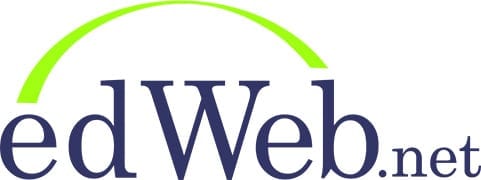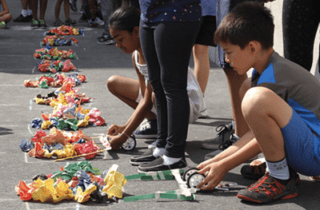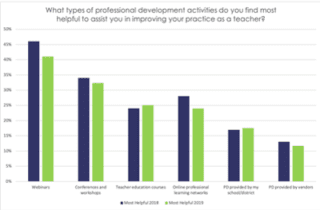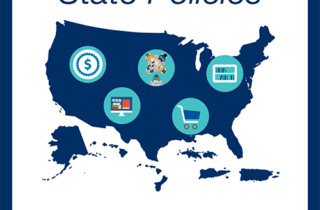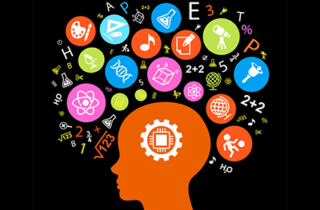Teachers from previous decades may have focused on “What did I teach?” but the new focus is “What did the students learn?” Whether classroom resources are digital or not, educators can collect data every day to inform their instruction. In the presentation “Authentic Learning Starts with Informed Instruction” Michael Haggen, Chief Academic Officer at Scholastic Education, and Suzanne Lucas, Vice President of Product Marketing for Scholastic Education Digital Solutions, discussed how teachers can use formal and informal data to guide ELA lessons and make sure all students are receiving the education they need.
Summer brain drain or the summer slide occurs when students, especially those from low-income families, lose some of the academic skills and knowledge learned during the previous school year. According to Erin Mulcahy, Senior Product Strategy Lead of Education at littleBits, during an edWebinar hosted by edWeb.net summer brain drain has a significant impact on elementary-aged students as the two-thirds of the achievement gap between lower and higher income 9th graders can be explained by summer learning loss. These early summer learning losses also have later life consequences, including whether students drop out of high school and attend college.
There are four lies/misconceptions about struggling readers that have become embedded in school systems, said Terrie Noland, Vice President of Educator Initiatives at Learning Ally during a recent edWebinar, “School leaders are just following along and are starting to believe them.” These misconceptions are having a detrimental impact on struggling readers, and school leaders need to set the tone and build a school culture where best practices and evidence-based research are shared to create a system of support for all readers.
Whether providing lessons for sick kids or giving parents a weekly update on classroom activities, livestreams and podcasts offer teachers yet another way to connect with their students and families. As Dr. Monte Tatom, Associate Professor of Education at Freed-Hardeman University, TN, explained in his edWebinar, “How to Survive Live Streaming and Podcasting in Your Classes,” it’s fairly easy for teachers to start. In addition to discussing how to choose between the streaming platforms, he talked about uses for the technology and how to handle privacy concerns.
Even in today’s tech-heavy environment, before moving to online assessments, leadership needs to ask: Should we? According to Glenn Robbins, Superintendent of Tabernacle Township School District, NJ, and Dr. Donna Wright, Director of Schools, Wilson County Schools, TN, too often the focus is on why everyone else is doing it or the idea that everything needs to be done on a computer. During their presentation, ”Online Assessment: An Evolving Landscape and New Opportunities,” they discussed the lessons they learned when they made the transition and what they would change if they could.
edWeb.net announces the release of its annual 2019 Teacher Professional Learning Survey. edWeb has been conducting research on educators’ use of edWeb and its impact on professional learning for a number of years to track trends in professional learning and looking for ways to continuously improve. The survey results show consistency over time in the top reasons why teachers engage in professional learning.
During a tour of updates to SETDA’s Digital Instructional Materials Acquisition Policies for States (DMAPS), which showcases state policies in support of digital materials, Christine Fox, Deputy Executive Director for SETDA, discussed new features like professional development information. In addition, Dr. Michael Nelson, Director of Curriculum and Assessments for Coeur d’Alene Public Schools (ID), explained in the presentation “Navigating the Digital Shift: Leveraging Quality Instructional Materials for Learning,” how his schools are shifting to an OER (open educational resources) environment as part of their overall plan to improve individual student achievement.
Teachers have many edtech resources in their toolbox now. The question is, are the teachers within a school, grade, or subject area accessing the same toolbox? More important, are the tools of equal quality? During the edWebinar, “Transform Learning: Track Results for Chromebooks, Google Suite, and Every Application,” presenters Kyle Berger, Chief Technology Officer at Grapevine-Colleyville ISD, TX, and Matthew X. Joseph, Ed.D., Director of Digital Learning and Innovation at Milford Public Schools, MA, talked about why they wrangled their technology and how having a defined edtech toolbox improved teaching and learning overall.
When students don’t perform well in a subject, the typical responses relate to student motivation, e.g., they need more grit, they don’t have the right growth mindset, or they just need to work more effectively. In other words, the student gets the blame. During his presentation, “Promoting Belonging in Math Through Instructional Choices and Practices,” Jamaal Sharif Matthews, Ph.D., Associate Professor at Montclair State University, NJ, shared his research on the role of belonging in school success and how it may be even more substantial for ethnic minority and socially marginalized youth. While his work is primarily centered on mathematics education, Dr. Matthews’ work on building instructional practices to promote belonging can apply across subjects and grade levels.
The principles of learning have been around for centuries while only in the last 20 to 30 years has the science of learning been studied. According to Paul W. Ownby, Senior Product Manager at Learning.com, during a recent edWebinar, the science of learning focuses on how we learn and how we can maximize the retention and storage of information in our brains. By engaging all three areas of the brain, thinking (pre-frontal), sensing (sensory), and feeling (limbic system), thinking, creativity and identity skills are activated and maximum learning occurs. Leveraging the science of learning, classroom educators can design content activities that are efficient, engaging, model persistence, and reinforce student identity.

